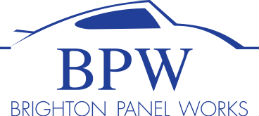Used cars in Australia cost a fraction of the original retail price, even if they’re still all shiny and new and have very few kilometres on the odometer. And for many of us, buying second hand is the only viable way to obtain the vehicle we want at a price we can afford. But without doing your due diligence, buying a used car can be fraught with danger—and nobody wants to blow their hard-earned cash on a lemon.
Check the following things before committing to a sale to snag a reliable ride and enjoy your new set of wheels for years to come.
The car is listed at a fair price
Once you’ve worked out the kind of car you want to buy, have a look through the top online car listing websites to get a good idea of what they’re worth. Take the age, kilometres, and aesthetic condition into consideration when sizing up what’s good value and what’s not. While the mechanical condition of a car is of utmost importance, it’s impossible to gauge from the photos and description alone.
Now that you know the market price, it’s time to start inspecting cars.
Review the service history
A well-maintained car will likely to serve you well for years to come. Examine the service history to see if the previous owner has invested sufficient funds to keep her in good shape.
All cars have a logbook within the owner’s manual, in which a mechanic signs off on the scheduled maintenance every 10,000-15,000 km or so. If several stamps are missing, be aware you’re taking a significant risk. Ideally, the owner should have receipts to back up the log book.
Get a pre-purchase vehicle inspection
Unless you’re an auto-mechanic yourself, it’s a smart idea to get a pre-purchase vehicle inspection before going ahead with a sale. Although these inspections cost anywhere from $150 to $400, they could save you thousands if passed on a car with hidden underlying issues. It’s best to get a pre-purchase vehicle inspection after you’ve seen the car for yourself, and you’re happy to go ahead with the purchase.
If the car you’re looking at isn’t worth all that much—say, under $4,000—then you might take a risk and do the vehicle inspection yourself. Test all the electronics, look for signs of repainting (to cover up rust or an accident), confirm the keys function on every door, and take her for a lengthy test ride using every gear.
If you do uncover any issues, you can use the estimated cost of repairs to negotiate a better price on the sale.
Check the seller’s credentials
Upon agreeing to purchase a car, take a photo of the seller’s license and confirm their name matches the registration papers.
Next, locate the Vehicle Identification Number, which is usually listed somewhere in the engine bay (research online where to find it before inspecting the car). With this number, you can run a Register of Encumbered Vehicles (REVS) check to determine whether the vehicle has been in an accident, was written off, or still has money owing on it.
Dealership versus private sale
Under Australian law, licensed motor dealers must provide all customers with a statutory warranty to cover the cost of mechanical repairs on a second-hand car. A ‘Class A’ warranty covers vehicles under ten years old and with less than 160,000km on the odometer. The ‘Class A’ warranty expires after 3 months or the first 5,000km, whichever occurs first. If the car is over ten years old or has more than 160,000km on the odometer, a ‘Class B’ warranty is valid for one month or for the first 1,000km.
While mandated warranties provide peace of mind, dealerships sell cars at about 30% higher than the private sellers. And while a private sale will be significantly cheaper, you’ll have no protection should your new ride run into trouble soon after the purchase.
If your preferred new car is in tip-top condition except for an unsightly car door dent, then Brighton Panel Works has the perfect solution for you. Get in touch with the team today for paintless dent removal in Melbourne. With over 50 years of experience in prestige motor vehicle repairs, Brighton Panel Works is a trusted body repair service provider, covering Melbourne’s inner city and bayside precincts.

